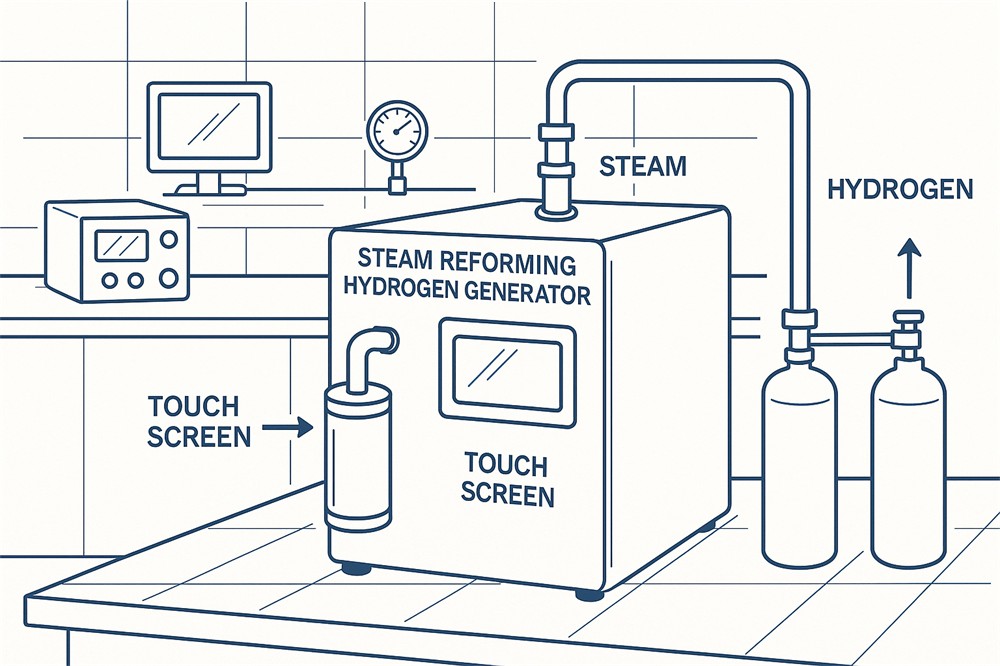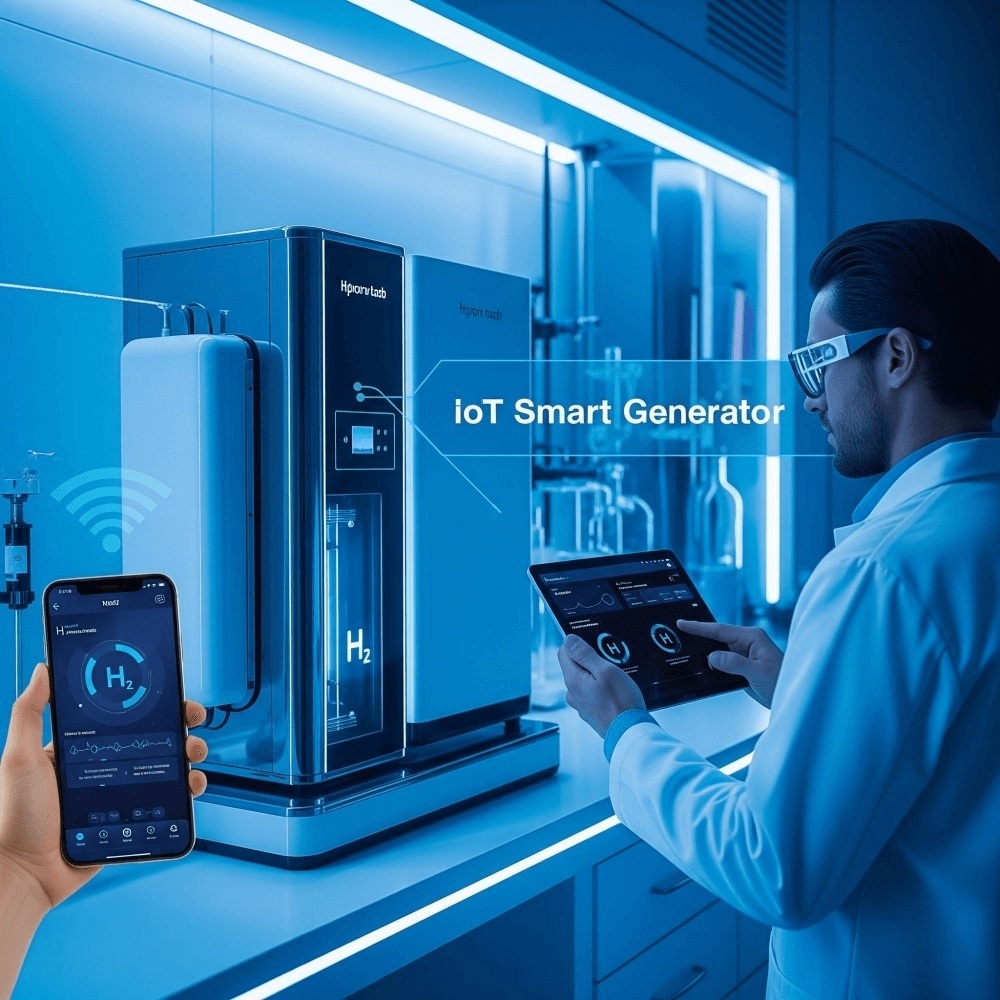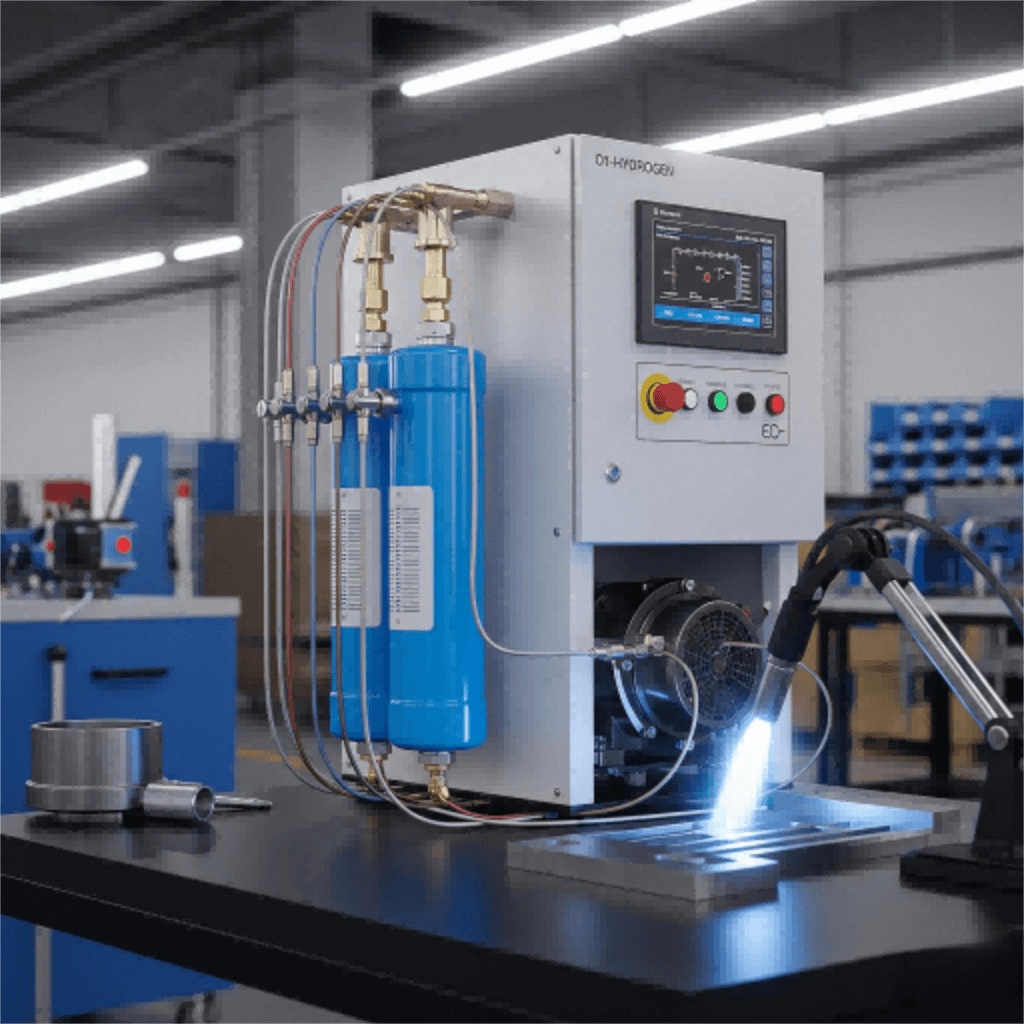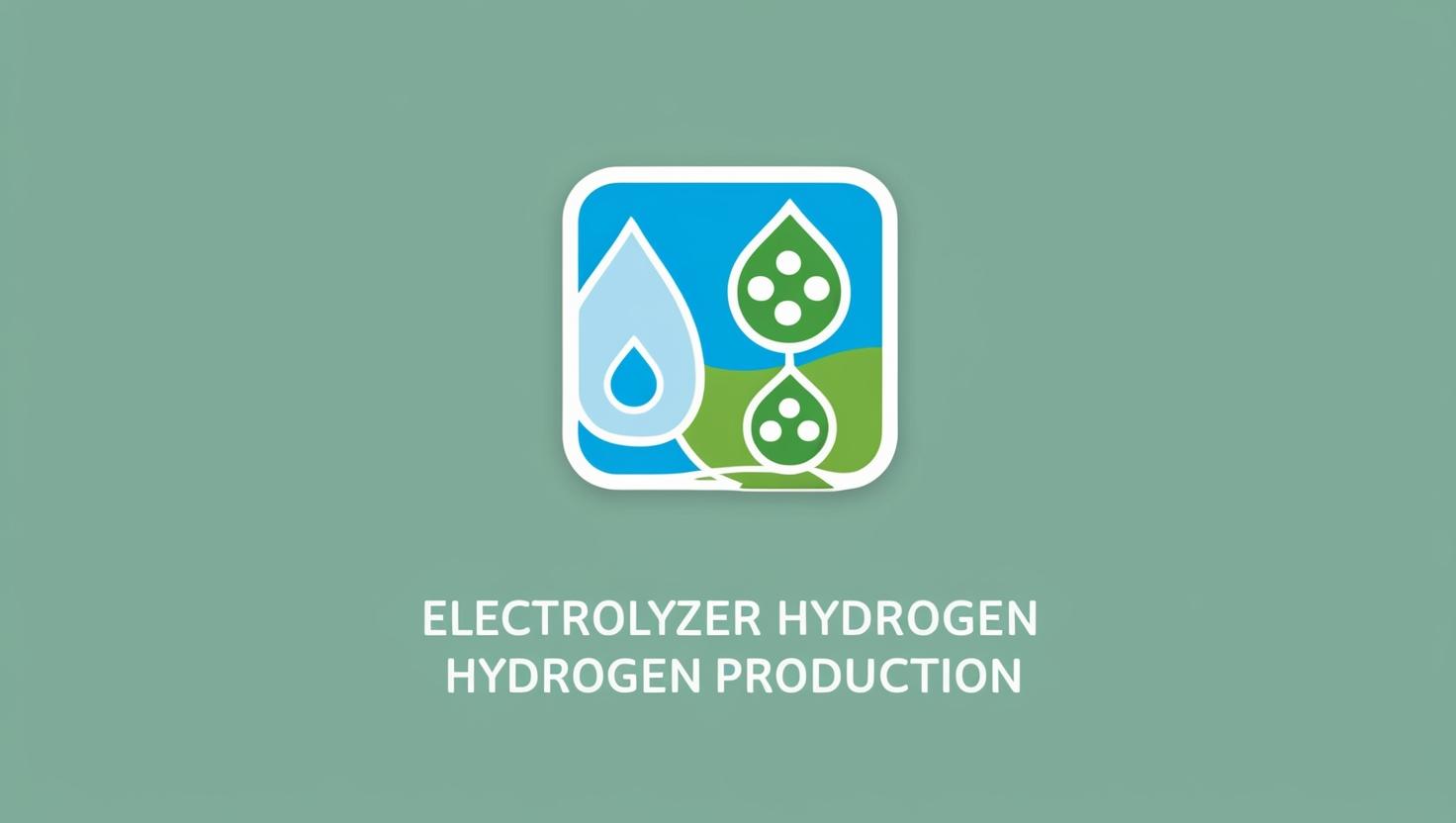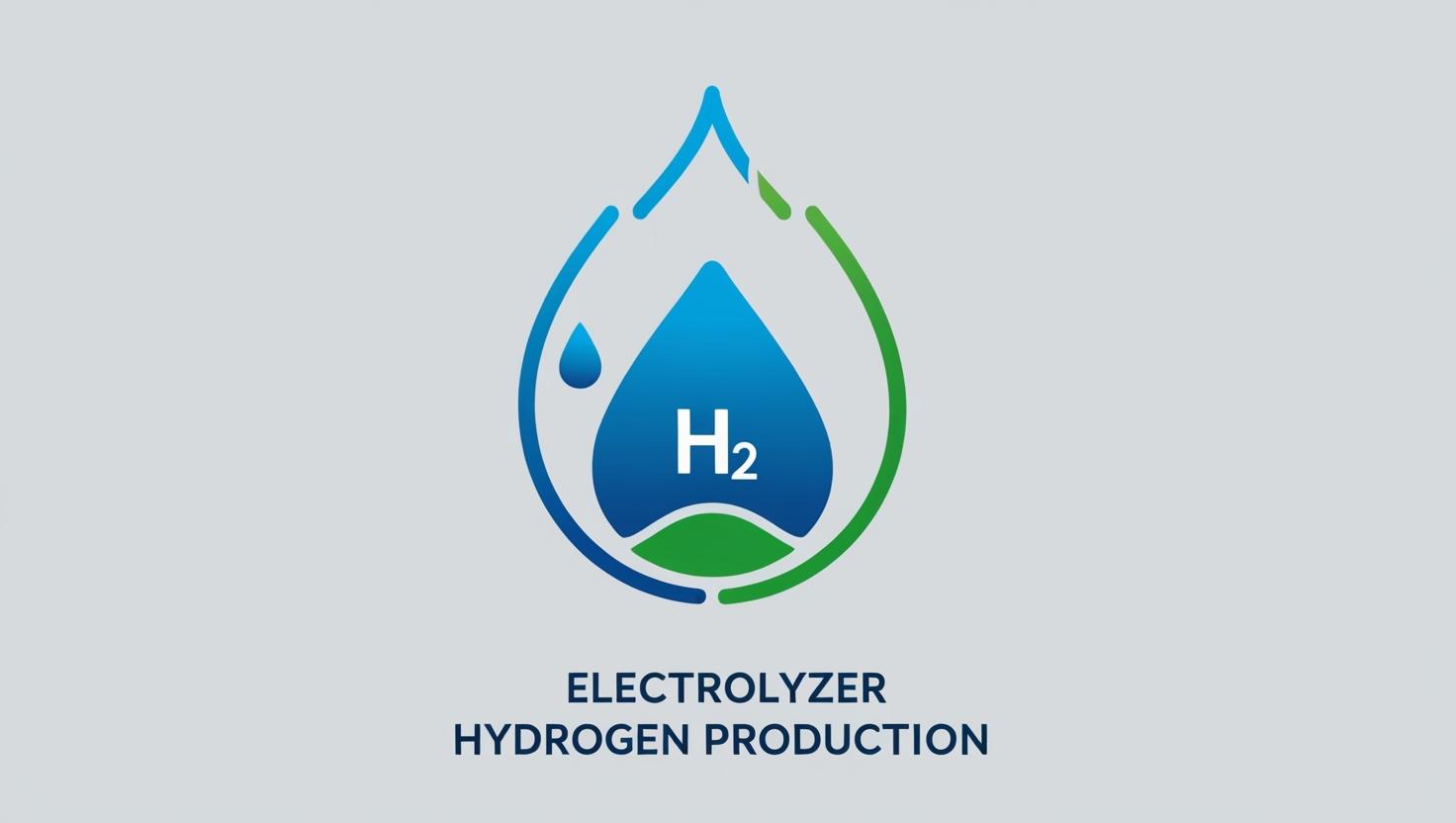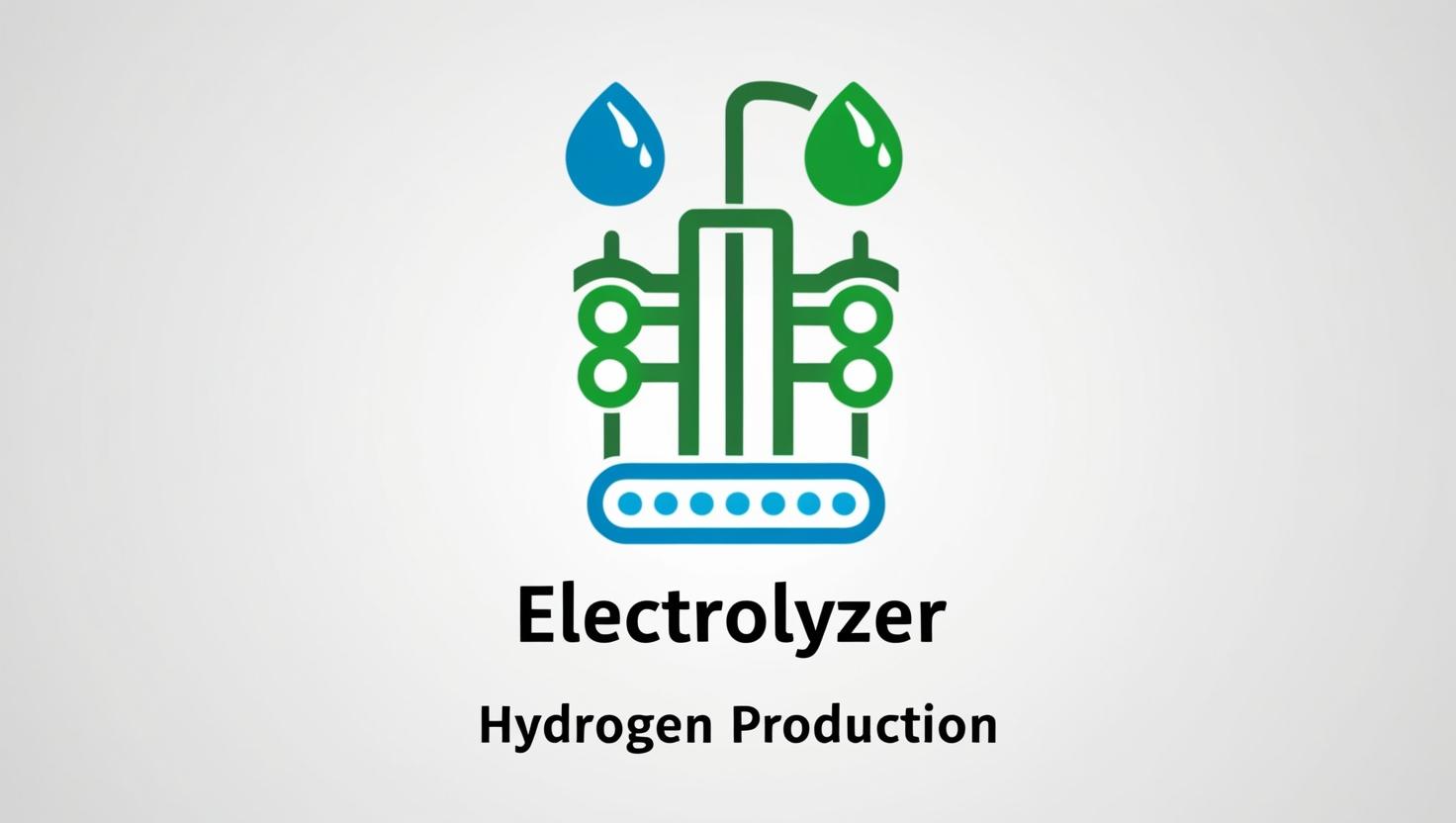Introduction
Hydrogen has taken center stage in today’s clean energy and precision manufacturing revolution. As an energy carrier and industrial reagent, its versatility is unmatched. But not all hydrogen is created equal. In cutting-edge applications—like semiconductor manufacturing, pharmaceutical synthesis, and fuel cell research—hydrogen purity isn’t just important; it’s critical.
Enter the 99.999% purity alkaline type hydrogen generator, a game-changer for industries that demand nothing less than perfection. This article delves deep into the technologies and strategies that make these generators capable of delivering ultra-pure hydrogen and why it matters so much for modern industries.
Industries Requiring Ultra-High Purity Hydrogen
Semiconductor Manufacturing
The semiconductor industry is incredibly sensitive to impurities. During processes like epitaxial growth and wafer cleaning, even minute levels of contaminants can lead to defects in chips or circuit pathways. Ultra-pure hydrogen serves as a reducing agent and carrier gas, maintaining inert environments during manufacturing. Without 99.999% purity, yields drop and failure rates spike.
Fuel Cell Technology
Fuel cells, especially Proton Exchange Membrane (PEM) types, require exceptionally pure hydrogen. Catalysts inside the fuel cell—typically platinum—are susceptible to poisoning by carbon monoxide or sulfur. Even a few parts per million (ppm) of impurities can drastically reduce efficiency and lifespan. High-purity alkaline hydrogen generators ensure clean input, enabling reliable power generation.
Pharmaceuticals
Hydrogen is frequently used in hydrogenation reactions, vital for synthesizing active pharmaceutical ingredients (APIs). Impurities can compromise the effectiveness of these compounds or introduce harmful by-products. In this case, only 99.999% purity hydrogen guarantees compliance with stringent quality standards in drug production.
Specialty Chemical Production
Advanced chemical syntheses often require controlled reaction environments. The presence of oxygen, water vapor, or other gases can catalyze unwanted side reactions. High-purity hydrogen helps maintain clean reaction pathways, particularly in producing specialty polymers and organometallic compounds.
Other Applications
In aerospace laboratories, nuclear research, and nanotechnology development, ultrapure hydrogen is equally vital. It’s often used in testing chambers, calibration systems, and sensitive synthesis setups.
Alkaline Electrolysis: Advantages for High Purity
Principle of Alkaline Electrolysis
At its core, alkaline electrolysis splits water (H₂O) into hydrogen and oxygen using an electrolyte—typically potassium hydroxide (KOH)—and a DC electric current. Hydrogen forms at the cathode, and oxygen at the anode.
Why Alkaline is Suitable for High Purity
- Lower Operating Temperatures: Compared to PEM systems, alkaline electrolyzers run at lower temperatures, reducing thermal degradation and contamination risks.
- Electrolyte Resilience: Alkaline systems tolerate slight electrolyte contamination better than PEM, helping maintain consistent output.
- Established Technology: Alkaline electrolysis has a decades-long track record, providing predictable performance and reliability.
Comparison with Other Methods
| Method | Purity Potential | Carbon Emissions | Operating Cost | Common Use Case |
|---|---|---|---|---|
| Alkaline Electrolysis | Up to 99.999% | Zero | Moderate | Industrial, Lab |
| PEM Electrolysis | High but varies | Zero | Higher | Mobility, Compact setups |
| Steam Methane Reforming (SMR) | Low (requires purification) | High | Low | Bulk Hydrogen |
Precision Control Mechanisms for Achieving 99.999% Purity
Electrolyte Management
- Purification and Filtration: Advanced systems integrate inline filters and purification beds to keep KOH solutions free from metallic or organic contaminants.
- Temperature and Concentration Control: Automatic feedback systems ensure electrolyte is always at optimal concentration and temperature, key for consistent gas purity.
Gas Separation and Purification
- Pressure Swing Adsorption (PSA): Removes residual oxygen and other trace gases through adsorption cycles.
- Palladium Membrane Purification: Allows only hydrogen atoms to pass through, achieving ultra-high purity.
- Drying Systems: Silica gel or molecular sieve dryers remove water vapor traces that could interfere with downstream processes.
Material Selection
- Corrosion-Resistant Alloys: Electrodes made of nickel or nickel-coated materials resist long-term degradation.
- Inert Seals and Linings: Materials like PTFE prevent chemical reactions with hydrogen or electrolyte.
System Design
- Optimized Flow Paths: Engineering the internal flow to reduce turbulence and backflow ensures consistent separation.
- Dead Volume Minimization: Reducing areas where gas can stagnate helps eliminate contamination zones.
Verification Methods for 99.999% Hydrogen Purity
Gas Chromatography (GC)
GC helps measure trace impurities—including methane, carbon monoxide, and nitrogen—down to ppm or even ppb levels, providing a robust purity profile.
Mass Spectrometry (MS)
MS detects ultra-trace elements in real time. It’s essential when the application involves complex or sensitive chemical systems.
Oxygen Analyzers
These instruments continuously measure oxygen levels to ensure the hydrogen stays within the 5.0 (99.999%) standard.
Moisture Analyzers
Water vapor content is critical in industries like semiconductors. Moisture analyzers detect humidity levels down to single ppm.
Third-Party Certification
Accredited labs verify hydrogen quality through sample testing, providing compliance documentation that satisfies client and regulatory requirements.
Case Studies: Applications of High-Purity Alkaline Hydrogen Generators
Semiconductor Manufacturing Example
A global chip manufacturer installed a dedicated 99.999% purity hydrogen generator to support epitaxial layer deposition. Yield improvements of 18% were reported after replacing bottled hydrogen with onsite generation.
Fuel Cell Research Example
At a national research institute, fuel cell prototypes required highly controlled testing. Using an alkaline generator, they maintained consistent purity and avoided $100,000+ in annual bottled gas expenses.
Pharmaceutical Synthesis Example
A biotech firm used ultrapure hydrogen in synthesizing antihypertensive drugs. Batch-to-batch consistency improved markedly, helping the firm meet strict FDA documentation requirements.
Frequently Asked Questions
1. Why is 99.999% hydrogen purity necessary?
It ensures sensitive processes like chip manufacturing and drug synthesis remain uncontaminated, improving product quality and safety.
2. Is alkaline electrolysis better than PEM for purity?
Yes, in many industrial applications. It offers robustness, stability, and is easier to maintain at ultra-high purity levels.
3. How often do generators need maintenance?
Most systems require minimal maintenance—typically every 6–12 months—with proper monitoring and filtration.
4. What’s the role of PSA in hydrogen purification?
PSA removes residual gases, playing a vital role in pushing hydrogen purity beyond 99.9% to reach 99.999%.
5. Can I integrate these generators into existing systems?
Yes, most models are modular and compatible with lab, industrial, and research setups.
6. Are there certification standards for hydrogen purity?
Yes. Common standards include ISO 14687 for fuel cells and various ASTM guidelines for industrial use.
Conclusion
As hydrogen cements its place in the clean energy and high-precision manufacturing landscape, purity becomes a non-negotiable feature. The 99.999% purity alkaline type hydrogen generator not only meets these exacting standards but also offers a reliable, cost-effective, and scalable solution.
Whether you’re developing tomorrow’s semiconductors or today’s life-saving drugs, investing in high-purity hydrogen generation is a leap toward efficiency, innovation, and environmental responsibility.

